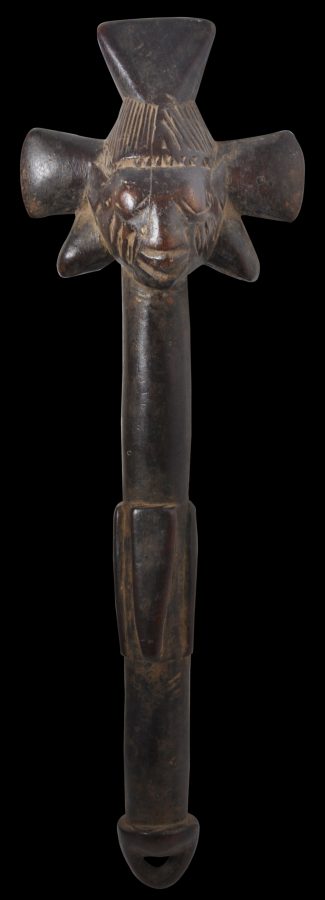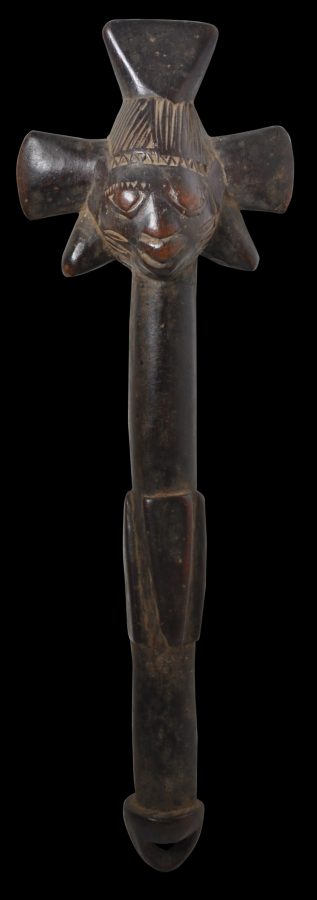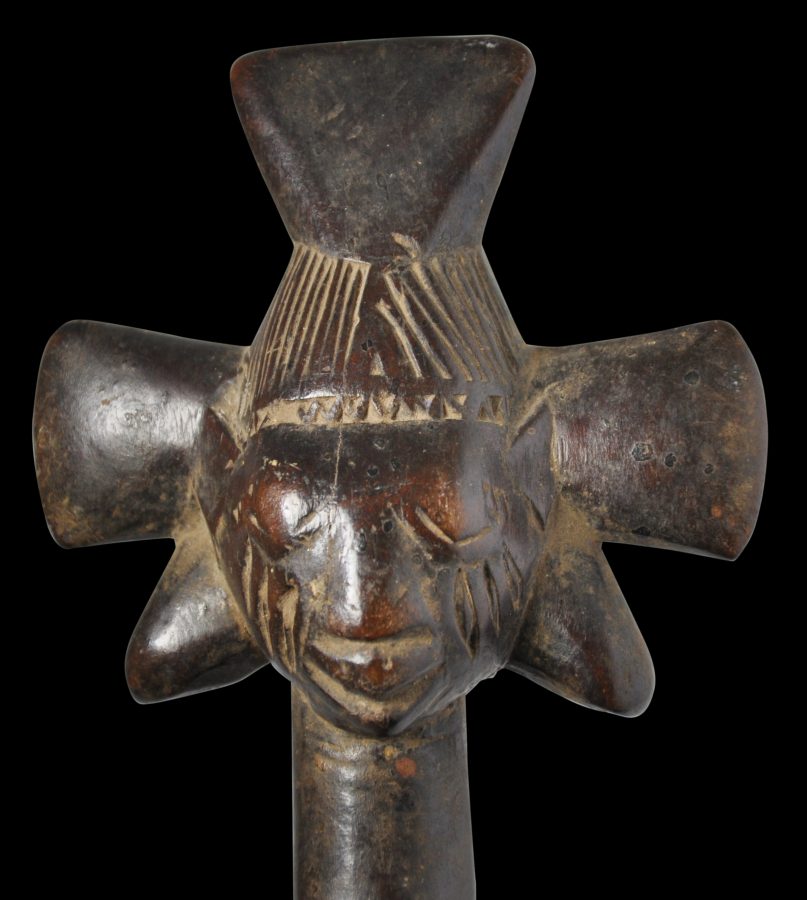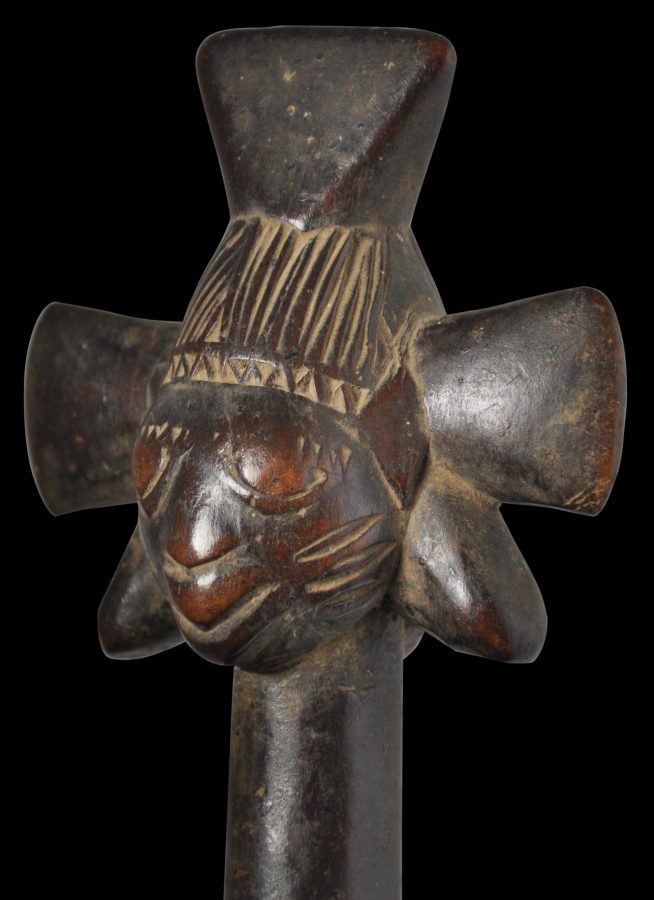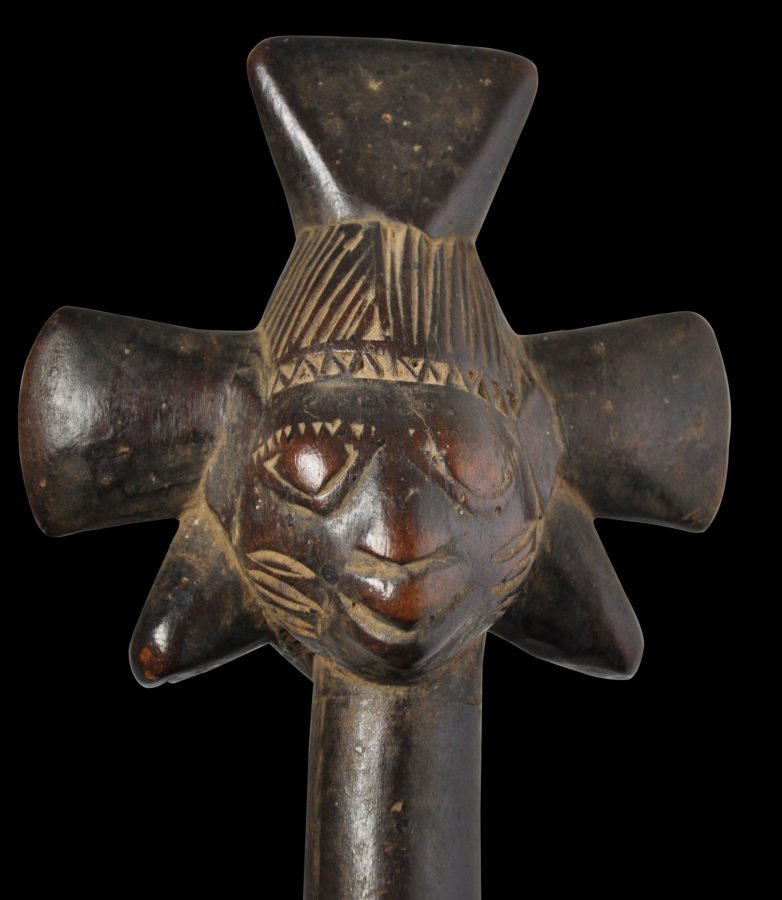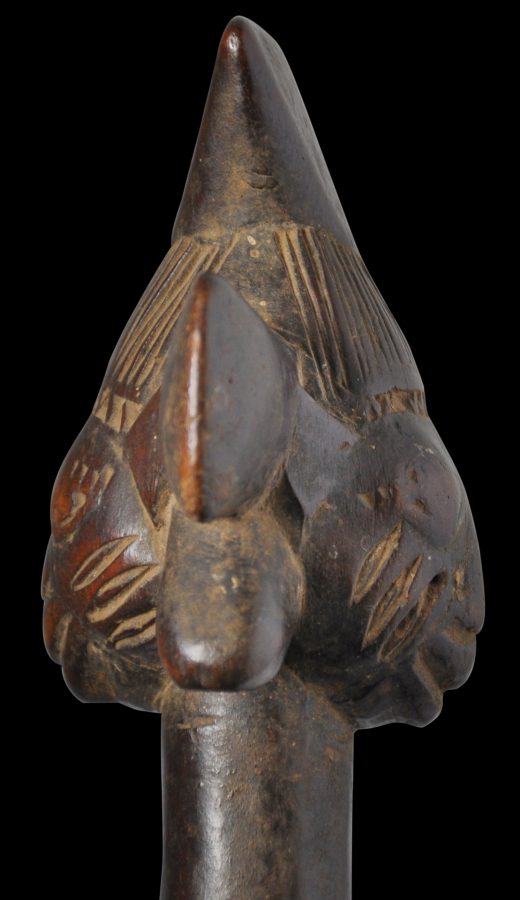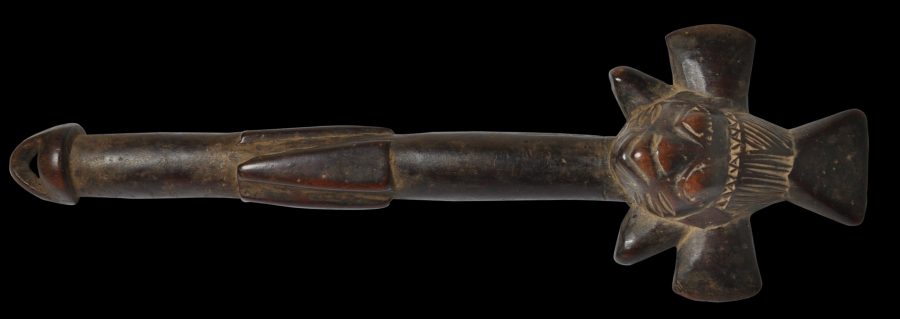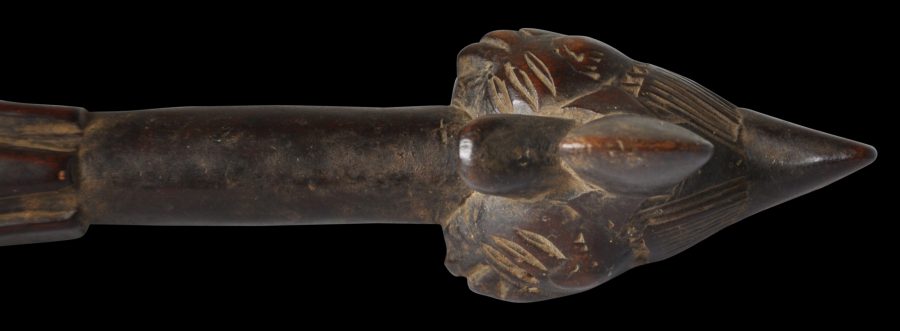Enquiry about object: 3890
Yoruba Janus-Headed Shango Dancing Wand
Yoruba People, Nigeria 19th century
length: 31.5cm
Provenance
UK art market
This fine dance wand, oroshe, is of a type we have not seen before, published or otherwise. Carved from a single piece of wood, it has exceptional patina and obvious age. Its contours have been rounded by handling, and the wood has developed a rich chocolate brown hue. It is carved as a supplicant Janus-headed devotee of Shango, the Yoruba thunder deity. The finial of the staff is carved with two scarrified faces as well as a highly unusual headdress which might be a stylised representation. The thunderbolt is a symbol of Shango.
Balancing the thunderbolt on one’s head is a metaphor for balancing the great power of Shango – the power that creates empires, but which also requires great care not to exceed its limits, which would bring about destruction.
The faces have bulging, semi-circular eyes; flat noses with flared nostrils; and full, pursed lips, which is all suggestive of an Egbado provenance.
Three horizontal scarifications (àbàjà) are incised on each cheek.
The handle has a section carved with four elongated triangles to serve as the grip, and it ends with a small carved loop.
Such a dance wands was carried by devotees at the annual festival of Shango and on other ritual occasions. During the Shango festival, devotees would dance in the streets to the thunderous rhythms of the bata drums. The dance wand would have presented a dramatic image when seen in the hand of a dancing devotee. It was waved in violent and threatening gestures to imitate the dangerous powers of Shango: unpredictable, violent, and creative and destructive – all at the same time. The Shango ritual would reach a climax when one of the devotees became possessed by Shango himself.
According to oral tradition, Shango was the fourth king of ancient Oyo Empire. He defeated the rivalrous Dahomey Kingdom. His army was famed for its skillful cavalry on the battlefield. However, Shango was also renowned for his unpredictable use of power, and his obsession with magic which often involved invoking thunder. He reigned for only seven years. His capital city Oyo-Ile and the royal family were destroyed by severe thunderstorms, apparently brought by his misuse of magical powers! He was devastated by the destruction of his family and his consequent humiliation by his chiefs. He left Oyo and committed suicide in Koso. However, thunderstorms continued to strike the Oyo Empire after his death. His chiefs built shrines and deified Shango to appease the thunderstorms.
The Yoruba is one of the largest tribes in West Africa. There are 30 million Yoruba people in West Africa, predominantly in Nigeria. The Egbado are one of the many tribes that make up the Yoruba culture. The Egbado are found mostly in the south-western areas of Yorubaland, where the ancient Oyo Empire was founded. Igan Okoto has the biggest population of the Egbado people.
The wand here is in excellent condition. There are no chips, repairs and so on. Just exceptional patina and ritual wear.
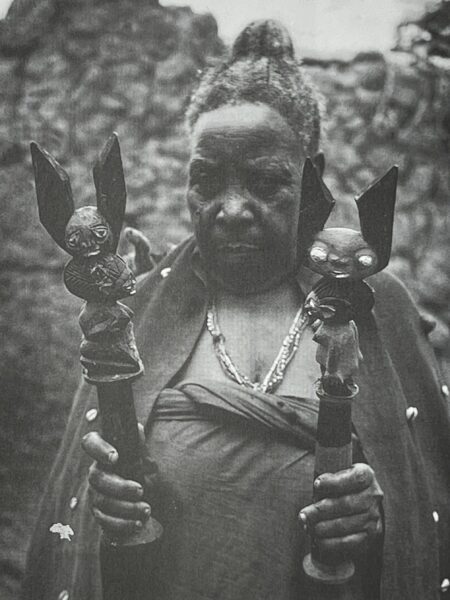
Above: A Shango priestess carrying two ritual staffs, Oyo, Nigeria. Photograph: Robert Farris Thompson, 1964.
References
Abiodun, R., H. J. Drewal & J. Pemberton III, Yoruba: Art and Aesthetics, The Center for African Art and the Rietberg Museum Zurich, 1991.
Bacquart, J. B., The Tribal Arts of Africa, Thames & Hudson, 1998.
Fagg, W., J. Pemberton III & B. Holcombe, Yoruba: Sculpture of West Africa, Collins, 1982.
Polo, F., Encyclopedia of the Ibeji, Ibeji Art, 2008.
Robbins, W. M. and Nooter, N. I., African Art in American Collections, Smithsonian Institution, 1989.
Walker, R. A., Olowe of Ise: A Yoruba Sculptor to Kings, National Museum of African Art, 1998.


